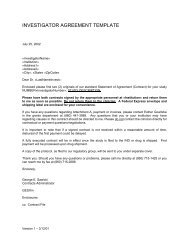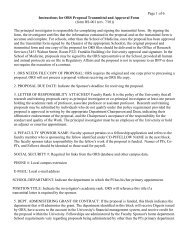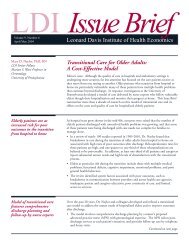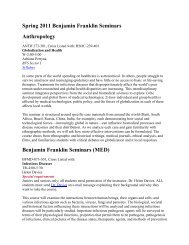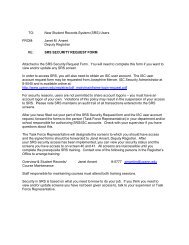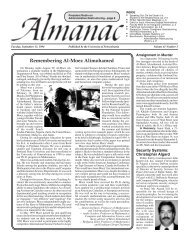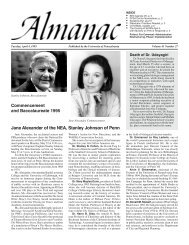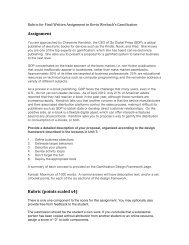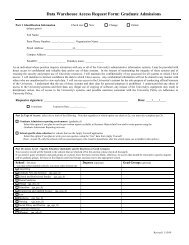Guidelines for conducting tabletop exercises Penn Mission ...
Guidelines for conducting tabletop exercises Penn Mission ...
Guidelines for conducting tabletop exercises Penn Mission ...
You also want an ePaper? Increase the reach of your titles
YUMPU automatically turns print PDFs into web optimized ePapers that Google loves.
<strong>Guidelines</strong> <strong>for</strong> <strong>conducting</strong> <strong>tabletop</strong> <strong>exercises</strong><strong>Penn</strong> <strong>Mission</strong> Continuity Program (MCP)Questions? Send a message to: askmc@lists.up enn.edu Resource management during an emergency or outage Continuity of operationsUsers get practice and become more invested in the plan. They have: The opportunity to think through what they might do in an emergency; <strong>for</strong> example,who will have what roles and responsibilities during an outage or emergency? The opportunity to give us feedback about what would be most useful to them Greater familiarity with the plan because they have worked through using it; thisimproves organizational coordination in the event of a real emergencyIncrease buy‐in <strong>for</strong> <strong>Mission</strong> Continuity planning in generalNOTE: let the TTX participants know: it is NOT a test of the users, only the plan.Who should be invited to the TTX? The attendees depend upon which plan is being tested. For example:o To test a Loss of Technology plan, make sure to include the users who makedecisions about what to do if the computers are down (faculty, staff members), aswell as the IT support people. It is also helpful to include the IT support people inthe construction of the <strong>tabletop</strong> exercise.o If your plan includes assembling an Incident Management Team, include allmembers of the team, then tell them several are either on vacation or out with theflu. This lack of availability will simulate real life.o To test a Loss of Building plan, make sure to include people who make decisionsabout what to do if that facility is unusable, such as a Department Chair, or theDirector of a Center, as well as the Building Administrator or Manager.o General guideline: make sure that everyone responsible <strong>for</strong> one or more steps inthe plan is invited to the TTX, and is available in person or by phone.Constructing the TTX: Decide o n the timing when the imaginary outage would occur. Include:o Day of the weeko Time of dayo Time of year (e.g., during advance registration, right be<strong>for</strong>e a grant deadline, etc.)o General weather conditions (snow, rain, extreme heat?) Decide on people to take the following roles:o A TTX facilitator, who will direct the action.o A facilitator’s lieutenant, to keep an eye on the time, to make sure that participantsknow what they need to know, to take notes and to do anything else that needsdoing. Decide on an imaginary trigger to set off the outage. For example: at 4:15 pm on aWednesday in early September, the fire alarm goes off in a certain facility. Since this issomething everyone will know, put this in<strong>for</strong>mation on a PowerPoint slide and project it.o From here <strong>for</strong>ward, any in<strong>for</strong>mation that all participants will know can be projectedon PowerPoint slides – <strong>for</strong> example, “At 4:25 pm, the fire department arrives.” At this point, the plan should be activated. From here on, there will be certain events thatonly specific people will know about, such as, “At 4:17, Joan calls you to tell you that smokePage | 2




